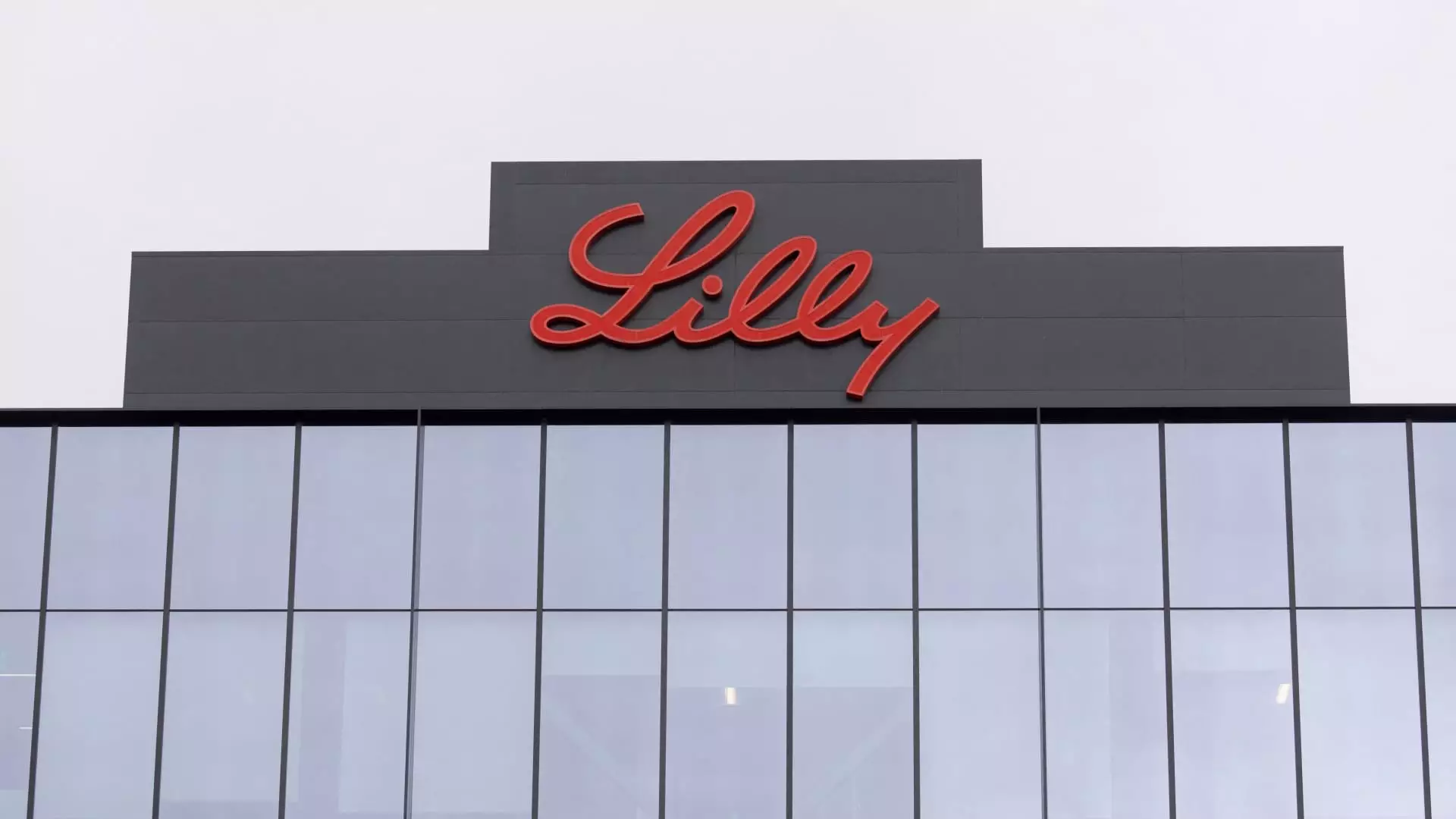Eli Lilly, a prominent player in the pharmaceutical industry, faced significant challenges in the third quarter of the year, resulting in a notable decline in its stock value. The company’s revenue and profit figures fell short of analysts’ expectations, largely attributed to underwhelming sales of its weight loss drug Zepbound and diabetes treatment Mounjaro. As the company grapples with these hurdles, it has revised its full-year adjusted profit guidance, signaling caution and raising concerns among investors.
In the context of the ongoing discourse in the healthcare industry, Eli Lilly’s adjusted earnings per share for the quarter was reported at $1.18, falling short of the anticipated $1.47. Revenue for the period also came in lower than expected, reaching $11.44 billion compared to analysts’ forecasts of $12.11 billion. This financial downturn led to Eli Lilly’s stock plummeting more than 12% in morning trading, a stark reflection of investor sentiment in light of these disappointing results.
Eli Lilly’s performance has been particularly impacted by the sales outcomes of its newly launched drugs, Zepbound and Mounjaro. These products, designed to assist in weight loss and diabetes management, respectively, were anticipated to perform exceedingly well following their introduction to the market. However, Zepbound, which garnered significant attention since its approval nearly a year ago, generated $1.26 billion in sales during the quarter—well below the $1.76 billion forecasted by analysts.
Similarly, Mounjaro posted $3.11 billion in revenue, more than double what it generated compared to the prior year’s quarter, but still shy of the expected $3.77 billion. The discrepancy in expected versus actual sales reveals a potential disconnect between market assumptions and the realities faced by the company as it attempts to navigate supply challenges. While demand for these incretin drugs has surged, substantial supply constraints have prompted Eli Lilly to invest heavily in boosting manufacturing capabilities.
One major hurdle that Eli Lilly has been grappling with is the scarcity of its incretin drugs, which have become increasingly popular among patients seeking effective treatment for weight loss and diabetes. In a statement from CEO David Ricks, it was clarified that the recent performance setbacks concerning Zepbound and Mounjaro were not indicative of a supply issue. He attributed the decline to inventory reductions among wholesalers rather than the inability to produce adequate quantities of the drugs. This distinction is vital as it emphasizes operational challenges rather than a sheer lack of capacity.
Moreover, Eli Lilly has decided to postpone its promotional efforts for Zepbound, a strategic move likely aimed at ensuring that patients can reliably obtain their prescriptions without frustration. This consideration reflects a profound understanding of patient needs and market conditions. The company plans to ramp up advertising in November, an approach that could stimulate awareness and demand for the drug as supply stabilizes.
In light of these challenges, Eli Lilly has made significant adjustments to its full-year earnings guidance. The company now anticipates adjusted earnings between $13.02 and $13.52 per share, a sharp decrease from the previous expectations of $16.10 to $16.60 per share. Furthermore, revenue projections have been tempered, now estimated between $45.4 billion and $46 billion, down from a high of $46.6 billion in earlier forecasts. These revisions signify a cautious outlook as Eli Lilly recalibrates its expectations amid an evolving market landscape.
Despite these setbacks, it’s worth noting that there are glimmers of hope for Eli Lilly. There are plans to ramp up drug production significantly by the second half of 2024, aiming for a 50% increase in output compared to last year. This proactive strategy indicates that the company is preparing to meet rising demand while enhancing its competitive edge against rivals, such as Novo Nordisk, who also face similar challenges.
Eli Lilly’s review of its third-quarter performance underscores the complexities of the pharmaceutical market, particularly in the rapidly changing landscape of weight loss and diabetes treatments. While the company has faced considerable challenges, its capacity for strategic adjustments and focus on enhancing manufacturing capabilities should position it better to capitalize on future growth opportunities. The ongoing commitment to addressing supply chain issues and responding directly to market needs speaks to the resilience of Eli Lilly as it navigates the evolving healthcare terrain. Looking ahead, stakeholders will likely remain attentive to how effectively the company manages these challenges as it strives to restore its standing in the market.

